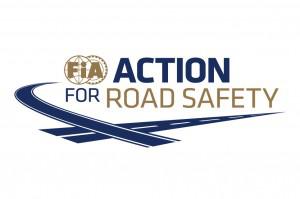
- The Washington Post
A map of the countries with the most dangerous roads (by Max Fisher)
Lots of people think that their home town has the worst traffic, the most aggressive drivers, the craziest cabbies. Sometimes they have strong anecdotal evidence. Russian drivers often employ dashboard cameras to record seemingly inevitable collisions with reckless motorists. In the United Arab Emirates city of Abu Dhabi, a three-day Blackberry phone outage coincided with a 40 percent drop in traffic accidents. When I visited Cairo, where just crossing the street is a sort of art form in itself, I presumed no roads could be more dangerous until a friend who had just returned from Indonesia assured me that Jakarta’s are far worse.
So who has the world’s most dangerous roads? It turns out, based on a comprehensive World Health Organization report that measures road safety by the number of motor vehicle-related deaths per 100,000 people, the answer is the Dominican Republic.
The Caribbean island nation (it shares the island of Hispanolia with Haiti) reports a staggering 41.7 driving deaths per 100,000 people per year. That means that, in any given year, a Dominican person has a one in 2,398 chance of being killed by a car. That’s not so bad until you extrapolate out by 70 years and find that, over a lifetime, a Dominican’s odds of dying in a car-related accident are one in 480. The WHO report notes that the Dominican Republic has weak helmet and speed laws and even weaker drunk driving laws. More than half of driving related deaths, 58 percent, are of occupants or drivers of two- or three-wheeled vehicles. In other words, motorcycles.
The next 10 most dangerous countries for driving, in descending order, are: Thailand, Venezuela, Iran, Nigeria, South Africa, Iraq, Guinea-Bissau, Oman and Chad. Those countries are marked in dark red on the above map, which visualizes the full WHO data set of road traffic deaths, the statistics for which are estimates based on reported deaths and other factors. The safest countries are in light yellow.
What do the dark red countries have in common? There does not appear to be a single common thread, based on a quick scan of the WHO report. There are some commonalities. The sprawling, jumbled urban spaces of Baghdad, Tehran, Lagos and Bogota are notoriously thorny driving. Then again, so is Cairo, and Egypt ranks as much safer overall. Thailand, like, the Dominican Republic, reports an unusually high number of deaths related to two- or three-wheel vehicles, i.e. motorbikes. But Iran and Oman, also highly ranked, have more even distributions of deaths among drivers and passengers of two- and four-wheel vehicles as well as pedestrian and cyclists.
As I wrote for The Atlantic after the 2011 Blackberry outage so improved road safety in the United Arab Emirates, shouldn’t countries with so much money and so few people — Saudi Arabia also ranked highly — have clean, clear, open, safe roads? It turns out that the profusion of oil wealth might actually make the roads more dangerous due to something political scientists call the rentier state effect. Individuals in such countries, who often live off lavish subsidies, may be more accustomed to seeing the government as something that gives out money, not as a regulatory and policing body. The governments, which draw their legitimacy and power from oil rather than from people, have less incentive to implement harsher driving rules, which might prove unpopular. And it can give citizens a sense that the law serves them, rather than the other way around.
The safest roads tend to be in northern Europe. Iceland is the very safest with only 2.8 road deaths per 100,000 people annually, followed closely by Sweden and then the Palestinian territories, where freedom of movement can be tightly restricted by the Israeli occupation.
The next safest countries are, in descending order: Britain, the Netherlands, Norway and Switzerland. Denmark, Germany, Ireland and Israel are all tied for eighth-safest.
The WHO report explains that these success stories came not just through safer driving or tougher drunk-driving laws but major government intervention, including “implementation of a number of proven measures that address not only the safety of the road user, but also vehicle safety, the road environment and post-crash care.” Medical care, both in terms of its quality and the physical nearness of hospitals, seems to play a major role in the number of driving-related deaths.
I leave you with this recent video from Saudi Arabia, which has a driving-related death rate among the world’s highest. Flagged by Saudi journalist Ahmed Al Omran, whose description is below, it shows some very, very unsafe road practices (or maybe just an audition for the next M.I.A. video):
This video of a Saudi man playing with his phone on a car hood as the driver cruises in Riyadh has gone viral since it was uploaded to YouTube few days ago. The uploader of the video wrote that the car was moving at a speed of 90km/h on Makkah road, one of the main highways in the Saudi capital, while the man who has covered his face with a red checkered shumagh can be seen on top of a Ford Crown Victoria vehicle sitting on the hood and later lying on the windshield and shaking his legs in the air.
























